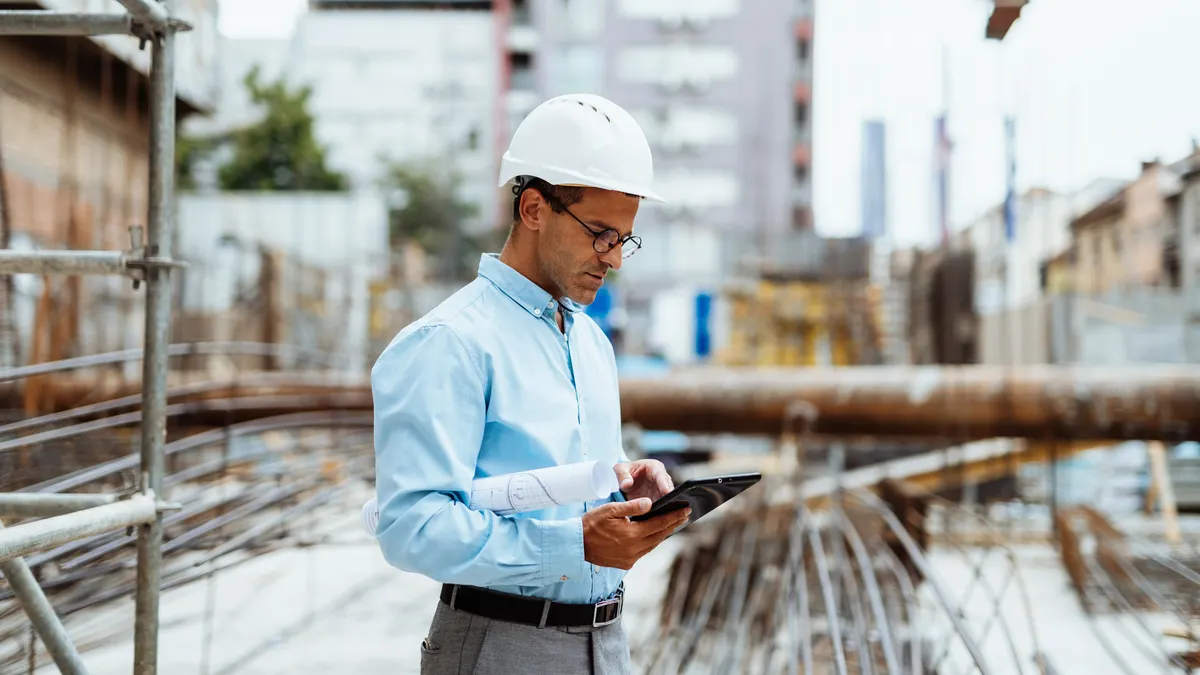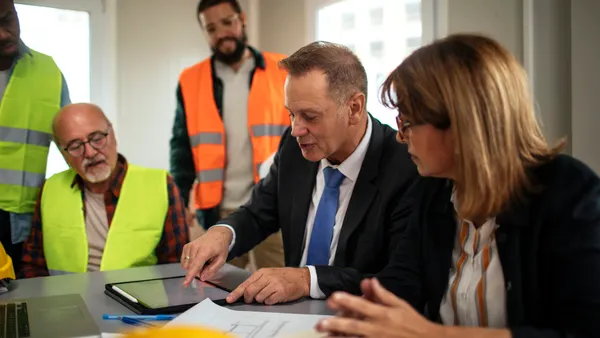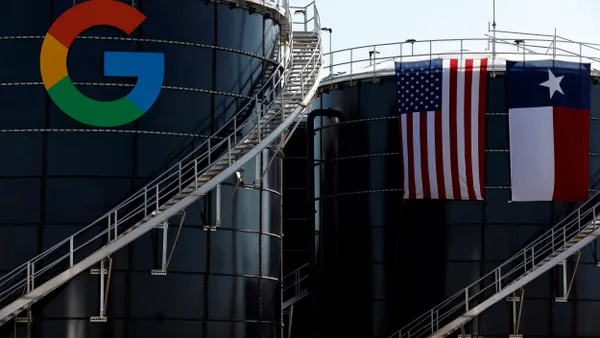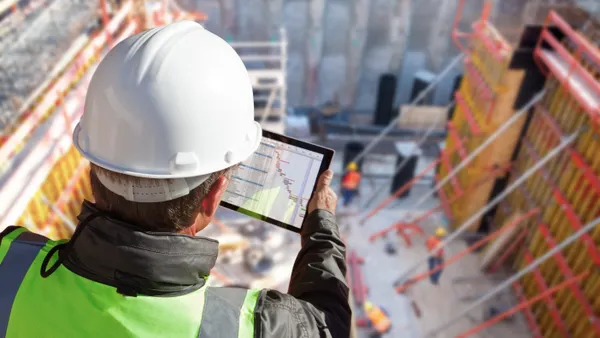Dive Brief:
- In a recent case study, construction firm Kiewit Corp. found that using unmanned aerial vehicles (UAVs) for confined space inspections reduces safety risks, man-hours and the cost of specialized equipment needed to send workers into hard-to-access areas.
- The firm used a UAV equipped with a collision-tolerant cage, high-definition camera and onboard LED lighting to inspect a concrete product storage silo, for example. The drone was covered in concrete dusk when it entered the structure, but was able to provide the operator with sufficient imagery to determine areas of deterioration, Kiewit said.
- According to the study, drones can be effectively used to inspect roof conditions, structural integrity and hazardous areas such as coal-fired boilers and chemical and power facilities.
Dive Insight:
The construction and engineering sector leads the country in drone use and investment, according to a Blue Research study commissioned by drone software company Skyward. Thirty-five percent of construction and engineering firms and 10% of U.S. companies with annual revenue of $50 million or more use the technology, the study found.
Once the initial investment is made, drones allow contractors to do more with less. In Kiewit’s use case, a drone gathered imagery that a human operator could evaluate from a safe remote distance, eliminating the need to send additional workers and specialized safety gear into the area.
Officials in the Spokane, Washington, Public Works Department recently approved a plan to begin using drones to inspect local infrastructure, monitor ongoing projects and conduct environmental analysis. The department expects drone inspection to speed up project completions and said that taxpayer savings will offset the $15,000 drone purchase.













